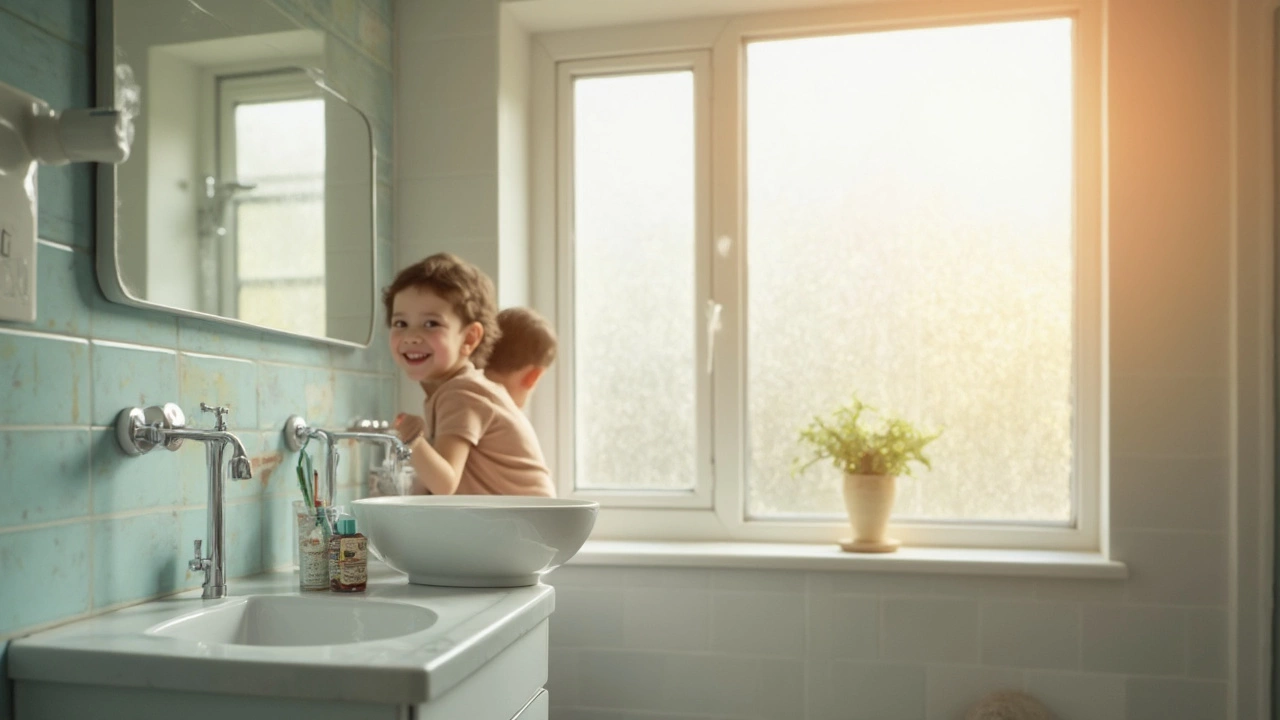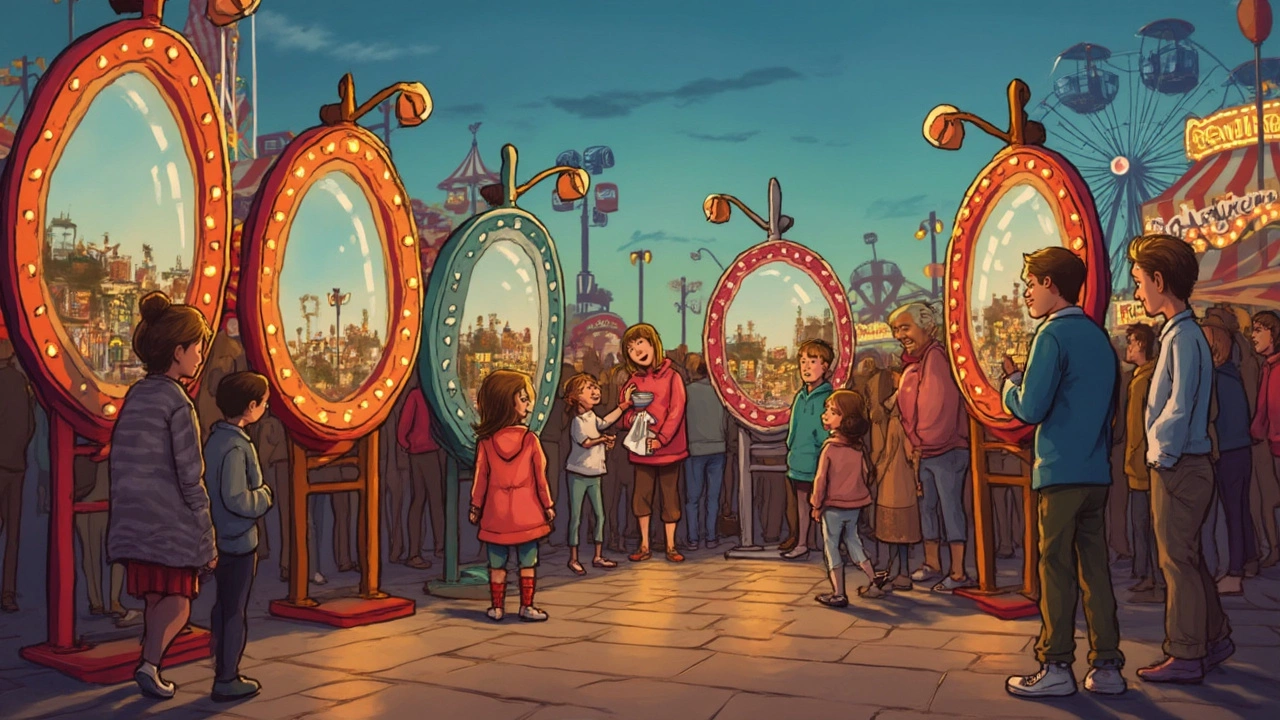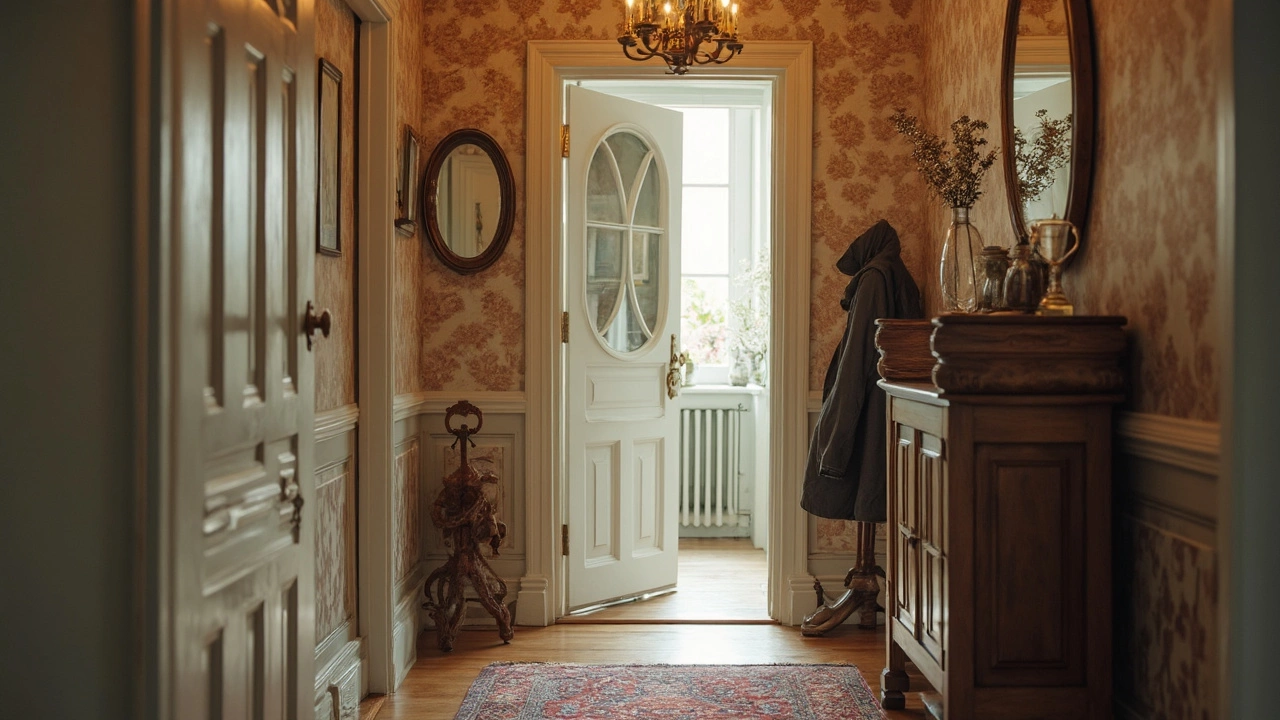3 Types of Mirror: Everyday Uses, Surprising Facts, and Simple DIY Tips

Mirrors aren’t just for checking your hair before you leave the house. They shape the way you see the world—literally. Think about it: that rearview mirror that helps you drive safely, those funny mirrors at carnivals that play with your reflection, or the regular one in your bathroom. All of them use the same basic science, but in very different ways.
If you’ve ever wondered why some mirrors make you look stretched or why certain stores use big round mirrors near the ceilings, you’re in the right place. Getting the basics about the three main mirror types—flat, concave, and convex—makes picking the right mirror for your space a whole lot easier. Plus, it helps you avoid buying something that messes with your sense of direction (or your self-esteem).
- Why Mirrors Matter More Than You Think
- Flat Mirrors: The Everyday Essential
- Concave Mirrors: Up Close and Surprising
- Convex Mirrors: Safety First
- Easy Mirror Hacks You Can Try
Why Mirrors Matter More Than You Think
Most people just see a piece of glass on the wall, but mirrors quietly run the show in our daily lives. Without mirrors, driving would get dangerous fast—especially when you try to change lanes without that trusty rearview. Even in space, astronauts need mirrors inside their helmets to check equipment and make repairs without turning their heads like owls.
Mirrors don’t just reflect your face. Security cameras rely on them to get views around corners. Supermarket managers use big convex mirrors so they can spot sneaky shoplifters or help prevent accidents in busy aisles. Your dentist gets a clear view of your back teeth with a tiny curved mirror, and doctors use similar tools for ear and eye checks.
On top of safety and health, mirrors change the way spaces look. Interior designers use large wall mirrors to make small rooms feel twice as big. Even a simple mirrored tray on a table bounces more light around and brightens up a dark corner. Camera makers use tiny mirrors inside DSLRs so photographers see exactly what the lens sees before snapping the photo. So the next time you spot a mirror in a weird place, it’s probably there for a very practical reason you hadn’t noticed before.
Flat Mirrors: The Everyday Essential
This is the mirror you see almost everywhere—bathrooms, bedrooms, changing rooms, hallways. Flat mirrors, also called plane mirrors, have one main job: give you a true, head-on reflection without messing around with size or shape. In science class, you might remember these are called “plane” because the surface is completely flat. That’s what makes them show your reflection just the way the world sees you, only flipped left to right.
Here’s a quick fact: when you stand one meter away from a flat mirror, your reflection appears one meter “behind” the mirror. That’s because light always bounces off at the same angle it hits. This type of mirror is your go-to for seeing yourself exactly as you are—no weird distortions.
This table shows some popular spots you’ll find a flat mirror and what purpose it serves there:
| Place | Why It’s Used |
|---|---|
| Bathroom | Shaving, brushing teeth, makeup—anything up close |
| Wardrobe/Closet Doors | Checking your outfit or getting dressed |
| Vehicle Sun Visors | Quick grooming checks while on the go |
| Gyms | Watching your posture during workouts |
Setting up a flat mirror at home is super easy—no special angles or distance rules to remember. Just hang it up at eye level for most tasks. If you want to make a room look bigger, put a big flat mirror facing a window or light source. That little trick reflects natural light and makes any room feel a lot more open without knocking out a wall.
Quick tip: For a truly accurate reflection, pick a mirror with thick glass (about 4-6mm) and proper backing. Cheap mirrors often distort your image just a bit, especially along the edges.

Concave Mirrors: Up Close and Surprising
If you’ve leaned into a makeup mirror and noticed your face getting huge—or tried shaving and your chin looked oddly close—you’ve just experienced what concave mirrors are all about. These mirrors curve inward, like the inside of a bowl. That simple curve changes everything about how you see your reflection.
One cool fact: concave mirrors can make objects look bigger or smaller depending on how far you stand from them. Up close, you'll see a supersized version of yourself; farther back, you'll look upside down. Weird, right? This isn't just for home vanity. Dentists wouldn't get much done without those little curved mirrors—those let them see your teeth at crazy angles and with way more detail.
Here’s a breakdown of where concave mirrors pop up in real life:
- Makeup and shaving mirrors—get a close look at every detail
- Dentists’ mirrors—they need to check the back of your mouth, not just what’s up front
- Satellite dishes and telescopes—they all use a concave curve to focus light or signals
- Flashlights and headlights—the curve helps reflect the light forward as a beam
The science behind it comes down to focusing light. Concave mirrors can gather light from a wide area and bounce it to one point, called the focal point. That’s the reason headlights can throw a tight beam down a dark road.
If you’re curious about how the image changes with distance, check out this quick table:
| Distance from Mirror | What You See |
|---|---|
| Very close | Big, upright face |
| At the focal point | No clear image (it blurs) |
| Farther away | Upside-down, smaller image |
Tip for using them at home: Keep your face about 10–20 centimeters away for best detail. If your mirror has a stronger curve, that distance gets even shorter. You’ll get the clearest, largest view at the sweet spot close to the mirror—great for fine-tuning your shave or nailing your eyeliner.
Convex Mirrors: Safety First
Convex mirrors look simple, but they do a big job—keeping people safe. The curve on these mirrors bulges out toward you, which makes them reflect a wide area. That’s why you see them on street corners, in parking garages, or even at cash registers in stores. They let you spot what’s coming around a corner or catch someone sneaking behind the aisle.
Here’s the biggest difference between a convex mirror and a flat one: convex mirrors make things look smaller, but let you see much more. It’s the same trick your car’s passenger-side mirror uses when it says, “Objects in mirror are closer than they appear.” You get a bigger view, but with everything a little shrunken.
"Convex mirrors are recommended for traffic safety because they increase the field of vision and reduce blind spots, making streets safer for both drivers and pedestrians." — National Highway Traffic Safety Administration
These mirrors are everywhere, often without you even noticing. Here’s a quick look at where convex mirrors help out most:
- Parking lot exits and entrances — you’ll see oncoming cars even if you can’t see past the wall.
- Store security — staff monitor wide areas without walking every aisle.
- ATMs and banks — customers check for trouble behind them before withdrawing cash.
- Road intersections with bad visibility — drivers can watch for cross-traffic.
Check out these quick numbers about convex mirrors:
| Use Case | Field of View Increase |
|---|---|
| Car side mirrors | Up to 60% wider |
| Parking garage corners | Nearly 180° visibility |
| Store ceiling domes | Covering up to 4 aisles |
If you want better home security, stick a convex mirror at your driveway or near a blind corner inside. They’re cheap, easy to install, and can help you spot trouble before it gets close. Don’t bother with flat mirrors if you want to see around corners—convex will always show you more.

Easy Mirror Hacks You Can Try
No need for a workshop or a science degree—there are smart tricks anyone can use with mirrors at home. Here’s the deal: mirrors change how your room looks and even how safe it is, and all you need is a basic understanding and a little effort. Want to make a cramped hallway look way bigger? Stick a flat mirror on the longest wall; suddenly, things feel twice as wide. It’s a classic trick for small apartments that designers swear by.
If you’re always fumbling by the door, use a small convex mirror near your entryway. This gives you a wide-angle view so you can see if the dog is escaping just as you step out. Stores use convex mirrors for a reason—it’s all about safety and seeing more at a glance.
Got a makeup table that never seems quite bright enough? Try using a concave mirror. These focus light and make it way easier to see details for shaving, tweezing, or makeup. Pick up an inexpensive one at any home store. Just keep it a bit away from your face for a sharp reflection; too close, and things get a bit weirdly magnified.
“Mirrors are one of the oldest decorating tricks in the book, but their effect is always fresh. A well-placed mirror can double your space in an instant.” — Nate Berkus, interior designer
Here are a few more quick hacks anyone can pull off:
- Check your smoke detector’s placement with a mirror—use a small hand mirror to see if the light is on or if the battery needs changing in those hard-to-reach spots.
- Bounce natural light deeper into a dark room by putting a mirror across from a window.
- Turn any picture frame into a unique mirror by swapping out the glass for a precut mirror panel from the hardware store. It adds style on the cheap.
- Hang a mirror in the entryway and do a quick check as you run out the door—not just for looks, but to remember things like your mask, keys, or wallet.
Don’t forget, mirrors work for both looks and safety. Whether you want to spot someone coming up the stairs or create a little drama in the living room, the right mirror makes a difference. And you don’t need to break the bank to pull these off.